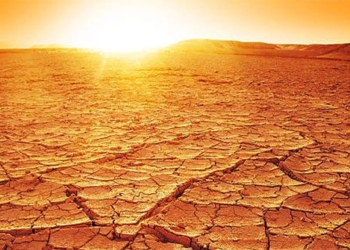From now until 2030, extreme heat will be a common trend in Europe during the upcoming summers.
According to an analysis published on August 25, the record-breaking heatwave sweeping across Europe this year will become the standard for summers by 2035, even if all countries commit to reducing greenhouse gas emissions.
An analysis by the Hadley Centre, part of the UK Met Office, initiated by the Climate Crisis Advisory Group (CCAG), examined the rapid temperature changes in the region using historical average temperature records from summers since 1850, comparing them with climate model predictions.

All heatwaves are signals of climate change caused by humans. (Illustrative image: CNN)
In the long term, the analysis indicates that an average summer in Central Europe by 2100 will be 4 degrees Celsius warmer than pre-industrial times. Scientists assert that all heatwaves are signals of climate change caused by humans, primarily due to fossil fuel combustion.
“The analyzed data serves as an urgent reminder that nations need to do much more than what they are currently committing to under the Paris Agreement on climate change to limit global warming, aiming to reduce temperatures by 2 degrees Celsius or 1.5 degrees Celsius,” the CCAG stated in a press release.
The United Kingdom set a record high temperature in July 2022, recording temperatures exceeding 40 degrees Celsius for the first time. Temperature records continue to be broken in other European countries such as Spain, Portugal, and France, forcing these nations to face wildfires due to heat and drought. Previously, the European Drought Observatory also reported that 60% of the area in Europe and the UK is currently experiencing drought conditions.
“In 2003, the consequences of prolonged heatwaves in Europe led to the deaths of 70,000 people. I predict such temperatures will continue to persist and become a long-term standard as carbon emissions continue. That forecast has now become a reality,” said Peter.
“The risks of extreme climate events, including wildfires, droughts, and flash floods, will continue to rise rapidly unless greenhouse gas emissions are significantly reduced,” commented Peter Stott from the Hadley Centre, Met Office.
Commitment from the Paris Agreement
The new findings were published ahead of the upcoming international climate change conference COP 27 in Egypt. Last year at COP26, nations agreed to adjust their emission plans with the goal of reducing global warming.
An analysis by the Climate Action Tracker last year indicated that no major economy in the world, including the entire G20, has plans to meet its obligations under the Paris Agreement. To prevent global warming, CCAG is urging countries to cut emissions “urgently, robustly, and rapidly” to significantly reduce the total cumulative emissions of carbon dioxide and other greenhouse gases.
In pursuit of such goals, the analysis asserts that the world should rectify what has not been accomplished in climate control, starting from the Arctic. According to CCAG, to ensure a manageable future, the world must “re-freeze” the Arctic, where temperatures are currently recorded to be 3.5 degrees Celsius warmer than pre-industrial times, exacerbating extreme weather events worldwide.
CCAG Chair David King stated that science has clearly demonstrated that extreme weather is a consequence of climate change, largely driven by human activities.
“Data released by the Met Office on August 25 also highlights that even if countries meet their previously stated commitments to reduce emissions, the situation could still worsen, with forecasts indicating that climate conditions in Europe will become even more severe in the future,” he said. “This data does not fully explain the climatic instability affecting the Arctic. However, as we know, the Arctic is a global tipping point that can have significant consequences for the entire planet due to the impacts of climate change.”




















































